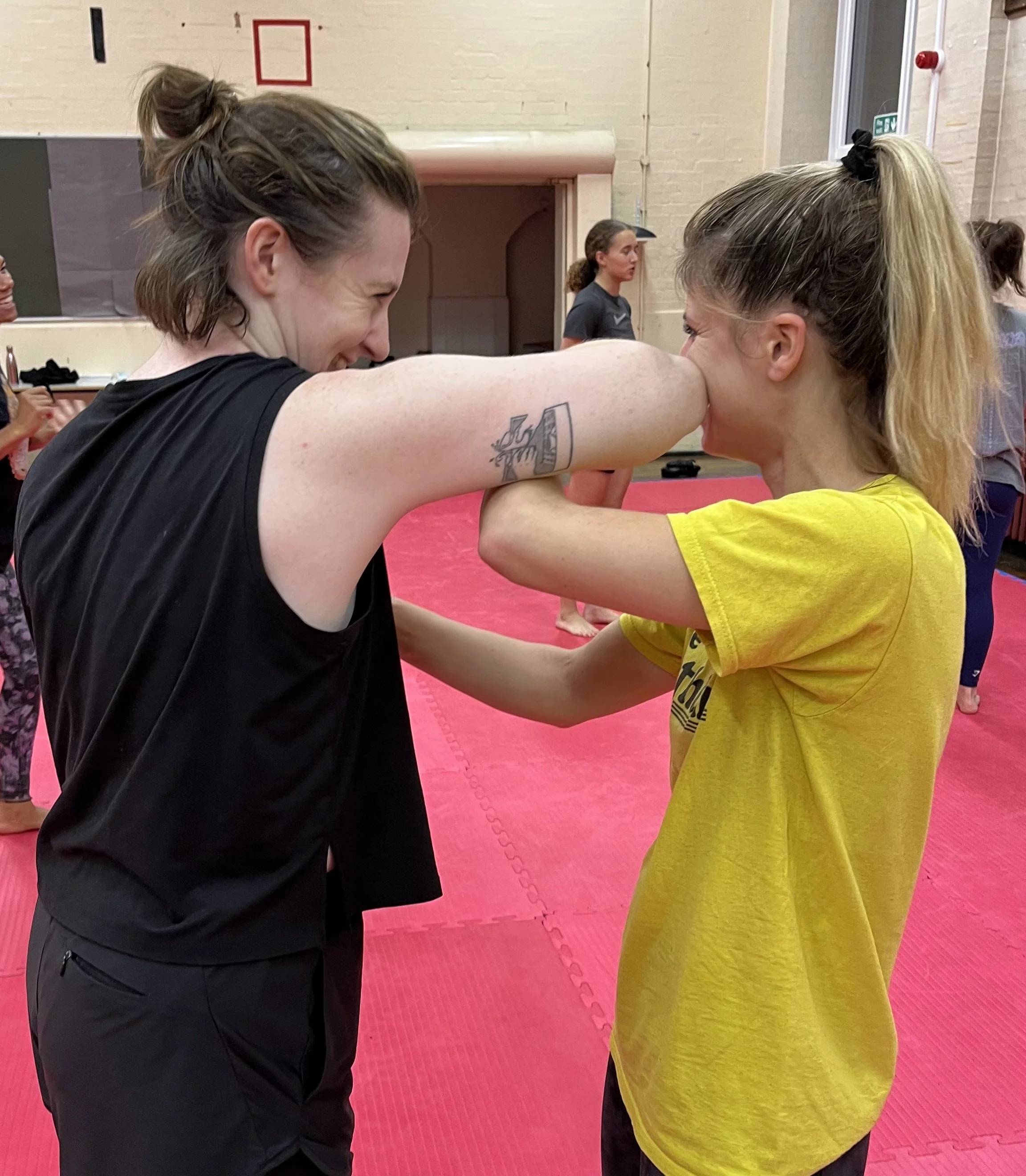5 Essential Self Defence Techniques Every Beginner Should Master
WHY SELF-DEFENCE MATTERS IN EVERYDAY LIFE
Self defence is a skill that can change your perspective on your daily habits and help you form new ones that will make you feel more confident and safer.
At Brixton Self Defence, we believe everyone deserves to feel safe and capable. Our classes in South London focus on practical, effective and simple techniques that can be applied in the real world.
Here are five essential self defence techniques every beginner should learn to build a solid foundation.
AWARENESS AND RISK ASSESSMENT; YOUR FIRST LINE OF DEFENCE
Before any physical technique, the most important self defence skill is awareness. Understanding your surroundings and assessing potential risks helps you avoid danger before it happens.
How to practice awareness:
Stay alert and avoid distractions like your phone, especially in unfamiliar or dimly lit areas.
Notice exits, escape routes, and the people around you when entering a new space.
Trust your instincts, if something feels wrong, act on that feeling.
Learn to read body language and identify signs of aggression early.
At Brixton Self Defence, we teach that self defence starts long before a confrontation begins. By sharpening your situational awareness and risk assessment, you can often prevent conflict entirely, your best defence is avoiding danger altogether.
USING YOUR FENCE, DE-ESCALATION, AND BOUNDARY SETTING
Your “fence” is a defensive posture that keep the aggressor at a distance without appearing confrontational. It allows you to create a physical barrier while trying to deescalate the situation verbally.
How to use your fence effectively:
Raise your hands naturally in front of you, palms open, use your hands as if gesturing while talking.
Maintain an assertive but calm tone when speaking.
Use phrases like, “I don’t want any trouble,” or “Please step back.”
Keep your feet balanced and ready to move if needed.
Avoid aggressive language or body language that could escalate tension. Only use if the aggressor is escalating the situation.
At Brixton Self Defence, we teach students how to combine the fence, deescalation techniques and boundary setting to take control of self defence situations before they turn physical. Effective boundary setting and verbal control can often stop a confrontation before it begins.
PREEMPTIVE STRIKES: HIT HARD, CREATE SPACE, ESCAPE
A preemptive strike, as the name suggests, is a strike used before the aggressor can attack to create a moment to escape. As long as the force is reasonable to the perceived threat, this is legal under UK law. These strikes are about stopping harm quickly and enabling your exit.
What makes a good preemptive strike:
Keep it simple and reliable under stress, a quick palm strike to the face, as an example.
Aim for the head to disorientate and stun the aggressor
Use your whole body hips and legs generate power, not just your arm.
Follow the strike immediately with movement: step back, run, or seek a safe place, call for help.
At Brixton Self Defence students learn when a preemptive strike is appropriate, and how to deliver the strike in the context of UK law. Regular practice builds the reactions and decision making needed to use these techniques when under pressure.
ESCAPING GRABS AND HOLDS
In many confrontations, an attacker might try to grab your wrist, arm, or clothing. Knowing how to break free can make all the difference.
Key principles:
Don’t rely on brute strength, use the techniques learnt in class.
Rotate your wrist or body toward the weakest part of the grip, the thumb.
Once the grip is broken follow up with an appropriate action this may be to step back and create distance or go on the attack
Our Brixton Self Defence classes teach simple, effective escape techniques designed for real world situations. These movements are based on natural reflexes, so they become second nature over time.
ESCAPE AND GETTING TO SAFETY
Once you’ve created the opportunity to break free, your next priority is getting to safety. How you escape and deal with the aftermath of the confrontation is an often under studied and very important side of self defence.
After a confrontation:
Move quickly to a safe location,somewhere public, well-lit, and ideally with CCTV or people nearby.
Call for help, contact the police or emergency services as soon as possible.
Seek support, talk to someone you trust about what happened. Emotional aftercare is just as important as physical safety.
If injured, get medical attention immediately, even for minor injuries. Adrenaline can mask pain or damage.
At Brixton Self Defence, we teach students that self defence doesn’t end when you get away it ends when you’re safe. Practising exit strategies, awareness, and recovery ensures you’re truly prepared for all stages of a confrontation.
BUILDING CONFIDENCE THROUGH CONSISTENT PRACTICE
Understanding self defence is a process, not a one-time event. With consistent practice and the right guidance, anyone can develop the skills and mindset to increase your chances of staying safe.
Whether your goal is to feel more secure walking home, build confidence, or learn practical the practical skills of self defence, Brixton Self Defence provides a supportive, beginner friendly environment to help you achieve it.

